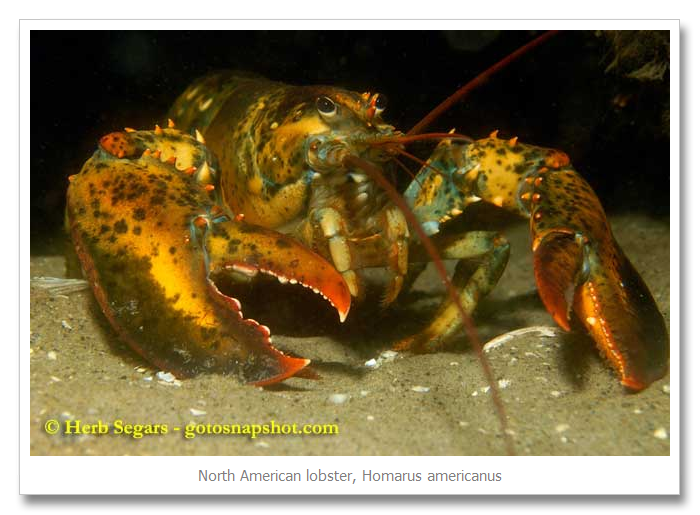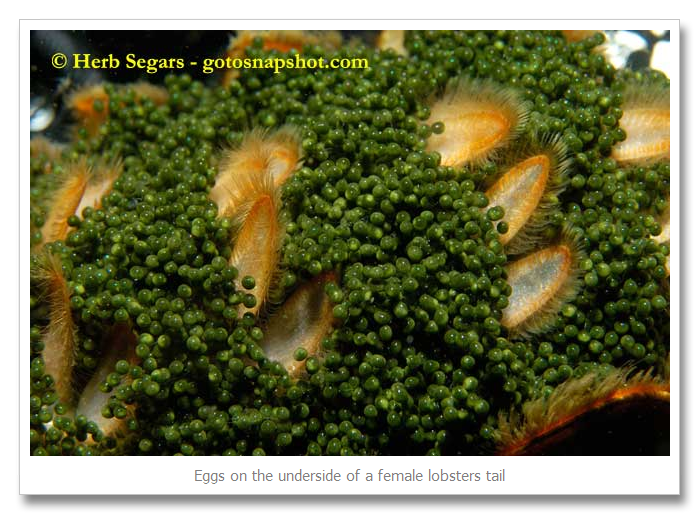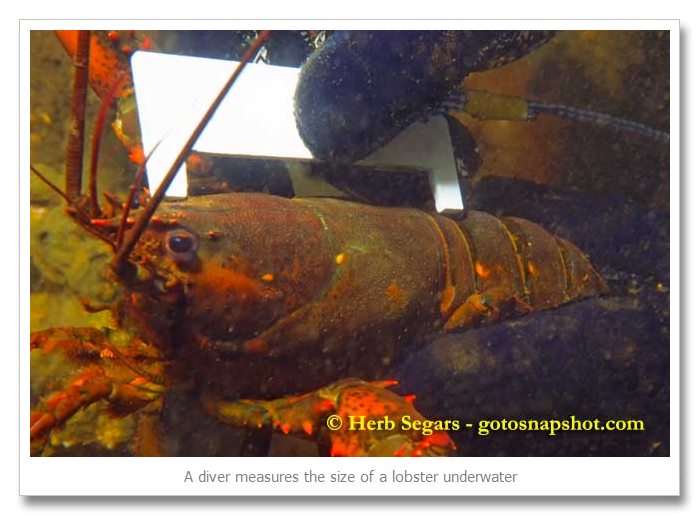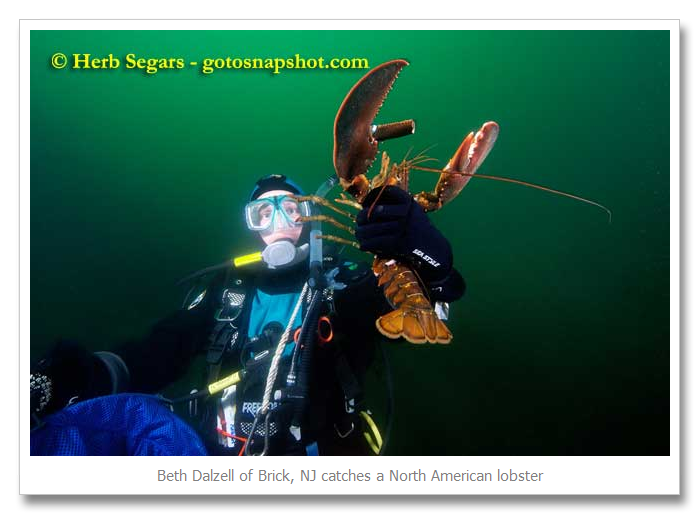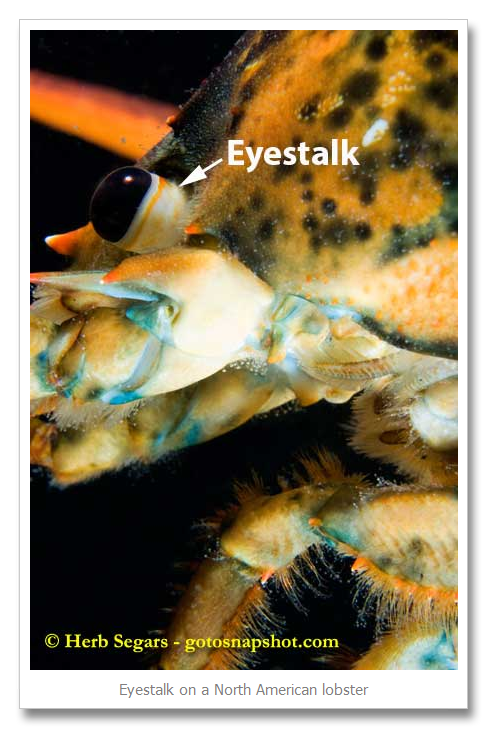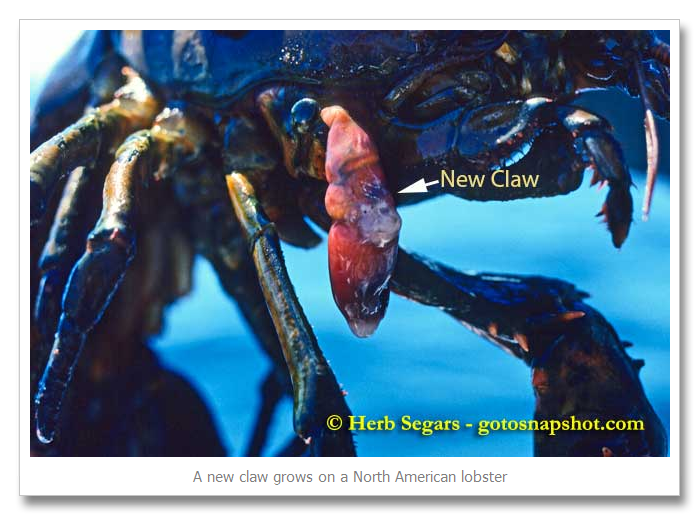Over the years, I have photographed and caught many North American lobster, Homarus americanus.
I have also tried very hard to learn about my subjects so that when I am searching for suitable subjects underwater I can find images that the normal photographer might miss. One that had eluded me for a long time (and it is my own fault) was the eggs on the underside of a female lobster’s tail. When a diver catches a lobster, they must first look at the underside of the lobster. If it is a female with eggs, it must be released. The reasons for this are obvious. I am not sure why I never thought to photograph the eggs but I didn’t. I think that it is really cool that they look like green peas.
After checking to see if it is a female with eggs, a diver must measure the size of the lobster to ensure that it is big enough and also to measure that it is not too big.
The last measurement is the newest requirement and it was put in place to make sure that the cream of the breeding stock remain. In 2012, the minimum size is 3-3/8” from the back of the eye socket to the beginning of the tail and the maximum is 5-1/4” from the back of the eye socket to the start of the tail. All of these requirements are great and they help to ensure that the lobster population remains strong.
I went to visit my doctor. Actually, Ronnie, my wife, had the appointment and I came along for the ride. The first thing that I want to say is that we both LOVE this guy. He is everything that we think that a doctor should be. He takes his time to make sure that he hears everything that you have to say and explains everything that you need to hear. To show that he does not pay me for this endorsement, he is quick to tell me when I am not doing what I should not be doing. Of course, it doesn’t hurt that he loves to fish and he loves the ocean so that we have a great deal in common to start with. He also has a great family (whom I have never met but have heard about). I want this next tidbit of information to go out to Owen, Seamus and Maggie – his children. I understand that they love the ocean and its inhabitants. I told my doctor today to tell them about what I had learned but I wanted them to know that I was thinking about them. I am not going to tell you my doctor’s name because you will all want him to be your doctor and I don’t share well (LOL).
I started this blog off about North American lobsters for a reason. Scientists have not been sure exactly how old lobsters get but they think that they get pretty old. A scientist has come up with a way of measuring a lobster’s age and it is similar to the way that they tell the age of trees.
There are two ways that they believe they can accurately predict the age of a lobster. One is by counting the rings in the lobster’s eye stalk which protrudes from the lobster’s body and holds the lobster’s eye. You can see the stalk in the picture to the left below the lobster’s eye. In order to count the rings, they have to dissect the eye stalk and look at it under a microscope. This means that the lobster will not be alive when it is done.
They can also count rings on a cross section of the lobster’s “gastric mill” which is part of the stomach with three teeth-like structures used to grind up food.
The second method can also be used to determine the age in crabs.
Until now, scientists estimated age based on size and a few other variables. In reality, it was an educated guess. This way will be much more precise.
My question is “how long have lobsters been around and why has it taken so long to figure out how to tell how old they are?’” I think that one of the reasons is that the sea is not quick to let go of her mysteries and that is okay with me.
While I am talking about lobsters, let me through in another interesting fact. If something or someone has hold of a lobster’s claw and it feels threatened, it can release the claw from its socket so that it can get away. Within a few molts, the claw will regrow and continue to grow to reach its former size.
It seems that I learn something new about the ocean inhabitants every day and I am amazed by it.
© 2012, Herb Segars. All rights reserved.

